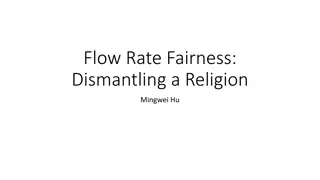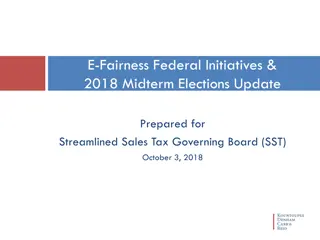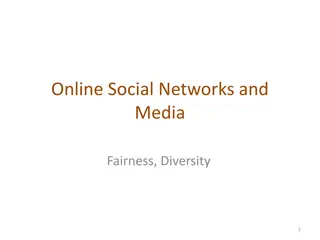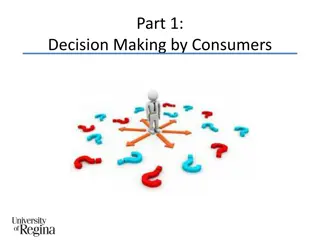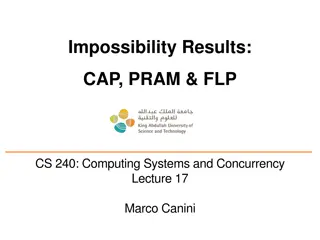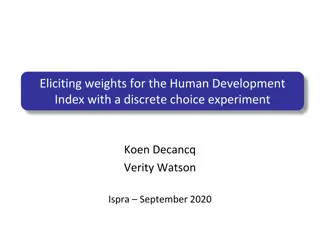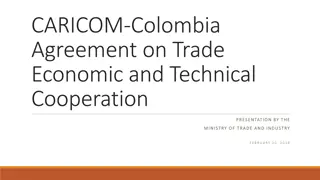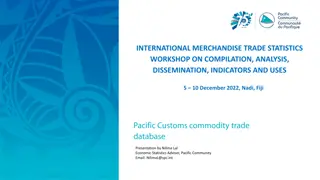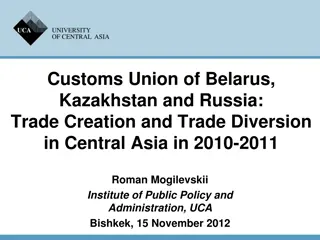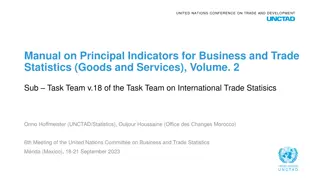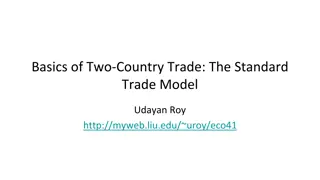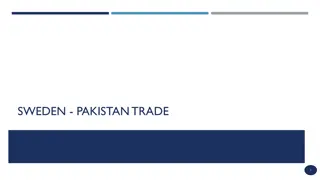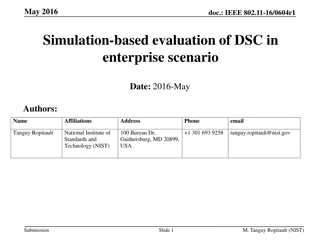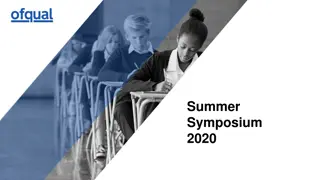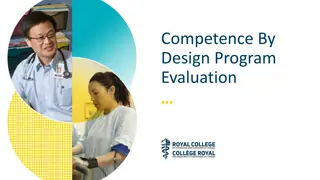Evaluation of Fairness Trade-offs in Predicting Student Success
This study delves into fairness concerns in predicting student success, examining trade-offs between different measures of fairness in course success prediction models. It explores statistical fairness measures like demographic parity, equality of opportunity, and positive predictive parity. Through methods evaluating model fairness and fairness trade-offs, the study assesses how correcting for one fairness measure impacts others and model accuracy, particularly in relation to student URM status. Findings aim to inform improvements in predictive modeling in educational contexts.
Download Presentation

Please find below an Image/Link to download the presentation.
The content on the website is provided AS IS for your information and personal use only. It may not be sold, licensed, or shared on other websites without obtaining consent from the author. Download presentation by click this link. If you encounter any issues during the download, it is possible that the publisher has removed the file from their server.
E N D
Presentation Transcript
Evaluation of Fairness Trade-offs in Predicting Student Success HansolLee and Ren F. Kizilcec Computing and Information Science Cornell University EDM 2020 FATED Workshop Paper available at arxiv.org/abs/2007.00088
Predicting student success Sources: 1) https://campustechnology.com/articles/2011/12/14/monitoring-the-pace-of-student-learning-analytics-at-rio-salado-college.aspx 2) http://evidence.laceproject.eu/?evidence=course-signals-at-purdue-using-learning-analytics-to-increase-student-success 3) https://news.nau.edu/grade-performance-status-helps-students-manage-their-gpas-2/#.XweAkJNKidZ
Fairness concerns Sources: 1) https://www.propublica.org/article/machine-bias-risk-assessments-in-criminal-sentencing 2) https://obamawhitehouse.archives.gov/sites/default/files/microsites/ostp/2016_0504_data_discrimination.pdf
Early Work on Fairness in EDM For a comprehensive review, check out our forthcoming Algorithmic Fairness in Education review chapter [http://tiny.cc/on39rz] ...and more! Doroudi et al. (2019); Loukina et al. (2019); Gardner et al. (2019); Hutt et al. (2019); Yu et al. (2020)
This Study Considering 3 statistical measures of fairness 1) - 1) - 1) - Demographic parity (Feldman et al. 2015) Pr(Pred=1 | Group=Male) = Pr(Pred=1 | Group=Female) Equality of opportunity (Recall) (Hardt et al. 2016) Pr(Pred=1 | Group=Male, Actual=1) = Pr(Pred=1 | Group=Female, Actual=1) Positive predictive parity (Precision) (Chouldechova 2016) Pr(Actual=1 | Group=Male, Pred=1) = Pr(Actual=1 | Group=Female, Pred=1) Impossibility Theorem Chouldechova (2016); Kleinberg et al. (2017) Research Questions 1. 2. How fair is a course success prediction model? How does correcting for one fairness measure affect other fairness measures and model accuracy?
Methods Evaluation of Model Fairness How fair is a course success prediction model? - - Build a random forest model using administrative data to predict median grade or above. Then evaluate its accuracy and fairness (using URM/Gender) Evaluation of Fairness Trade-Offs How does correcting for one fairness measure affect other fairness measures and model accuracy? - Alter the predictions (i.e. move the decision thresholds separately for each subgroup) in the testing set such that equality of opportunity is satisfied Then evaluate the resulting model accuracy and fairness. -
Results by Student URM Status Non- URM URM
Results by Student Gender Female Male
Conclusion Original model violates demographic parity & equality of opportunity, but not positive predictive parity - Consistent with Liu et al. 2019 - Consistent with the Impossibility Theorem (Chouldechova (2016) and Kleinberg et al. (2017)) Correcting for equality of opportunity improves demographic parity - But, 10% decrease in positive predictions for Non-URM and Female groups Correcting for equality of opportunity reduces positive predictive parity - But, 3~5% increase in precision for Non-URM and Female groups Setting group-specific thresholds introduces another fairness concern
Takeaways There is no single overarching definition of fairness in education. - E.g., demographic parity may be more important in college admissions than in student success prediction Furthermore, many fairness measures are often in tension. We need to evaluate fairness criteria for each application scenario. - - Decide what fairness criteria are most important Make explicit the fairness trade-offs that are made
Thank you! Hansol Lee and Ren F. Kizilcec Computing and Information Science Cornell University EDM 2020 FATED Workshop Paper available at arxiv.org/abs/2007.00088





